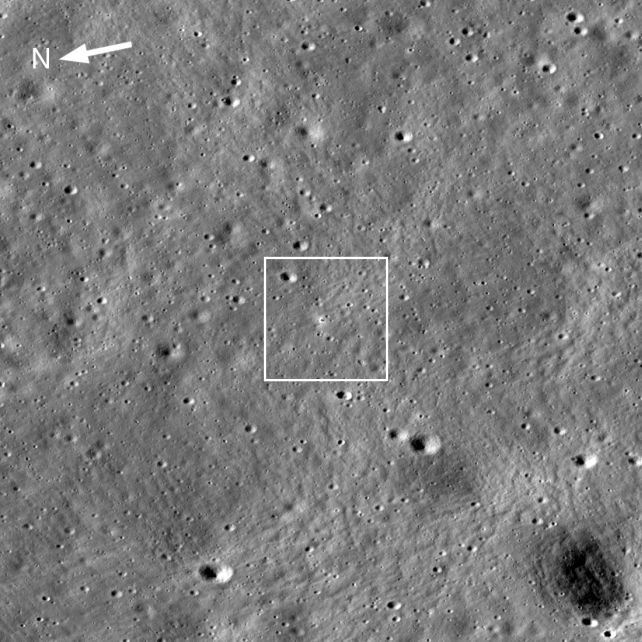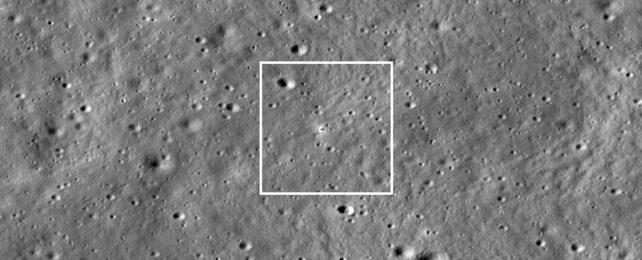The site on the lunar south pole where the Indian Space Research Organisation (ISRO) made its historic Moon landing can be seen in a new image from NASA's Lunar Reconnaissance Orbiter.
The image was taken on 27 August, just a few days after the mission made its epic touchdown on 23 August. The lander appears as a small blip in a vast expanse of crater-pocked lunar landscape, almost seeming to glow against the gray dust that coats the ground.
That brightness, according to NASA, is the result of the lander's rocket plume interacting with the surrounding regolith.

Although they have only been operational a few days, the lander, Vikram, and rover, Pragyan, have already begun performing science on the Moon.
An analysis has been made of the chemistry of the regolith at the landing site, finding sulfur, manganese, silicon, and oxygen. The lander has also measured the plasma environment near the lunar surface.
In addition, Vikram has performed a "hop" test, firing its engines and bouncing up, from its original position. Meanwhile, Pragyan has been exploring the site's immediate surroundings.

Also, the Instrument for Lunar Seismic Activity (ILSA) – the first Micro Electro Mechanical Systems (MEMS) technology-based instrument on the moon – seems to have recorded some sort of seismic event, although what that event might be is still under investigation.
This is tremendously exciting; to date, the best seismic data we have for the Moon was that collected by the Apollo program in the late 1960s and 1970s. Scientists have been itching to get their hands on more, since we still don't know how the Moon's gizzards are arranged. Seismic data would go a long way to resolving that.
Both lander and rover are currently in sleep mode. That's because it's now night where they are on the Moon, which lasts 14 days or so. Vikram and Pragyan, like other lunar missions before them, are solar powered, which means they "sleep" at night, when their batteries can't recharge.
Vikram and Pragyan will emerge from slumber on 22 September, when they will recommence their explorations of the mysterious south pole of the Moon.
